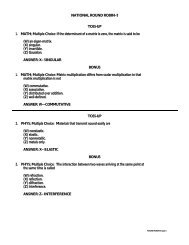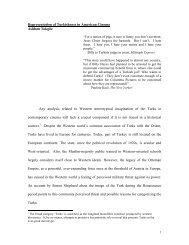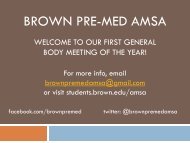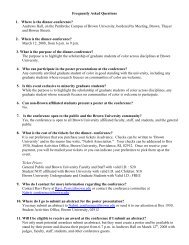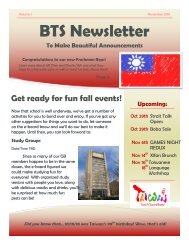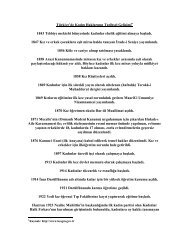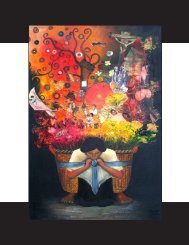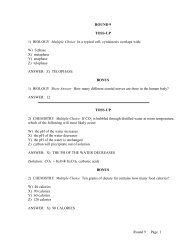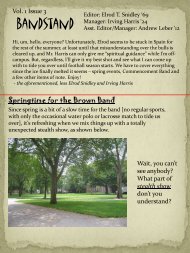Download as a .pdf file - Brown University
Download as a .pdf file - Brown University
Download as a .pdf file - Brown University
You also want an ePaper? Increase the reach of your titles
YUMPU automatically turns print PDFs into web optimized ePapers that Google loves.
POINTS OF CONVERGENCE<br />
The boat w<strong>as</strong> still docked. I had gotten there early, hoping to find a spot on the<br />
upper deck where I could get a clear view of the ceremony below. Once in<br />
my seat, I w<strong>as</strong> able to properly survey my surroundings. A makeshift altar stood<br />
on the lower deck with banners hung behind it: “Women <strong>as</strong> Priests—Nothing<br />
New!” Next to the entrance w<strong>as</strong> a table covered with calendars, pamphlets,<br />
and bookmarks with pictures of flaking ancient mosaics, accompanied by<br />
explanations of what these mosaics meant in terms of women’s roles in the<br />
early church. Looking out the window next to me, I saw that a small group<br />
of protesters had gathered on the dock holding signs: “Jesus W<strong>as</strong> a Man” and<br />
“Women Obey Priests.”<br />
It w<strong>as</strong> the first American ordination ceremony of a group called Roman<br />
Catholic Womenpriests, held this p<strong>as</strong>t July in Pittsburgh. As the name suggests,<br />
women who are members believe that they are called by God to become<br />
Roman Catholic deacons and priests. Since the Vatican maintains a staunch<br />
opposition to such claims, the ceremonies and the ordinations they claim to<br />
perform are hotly contested among church officials and members of the laity.<br />
All such ceremonies take place on boats, a characteristic the group <strong>as</strong>sociates<br />
with the fluidity and change it is working to effect in church policy. Sitting on<br />
the boat that day (literally seeing both sides of the issue), I thought about the<br />
privileging of viewpoints that often occurs in discussions about religion. Who,<br />
for example, is better able to judge the nature of religion—the academic or<br />
the believer What constitutes more valid evidence—text or archaeology What<br />
group h<strong>as</strong> the right to effect changes of policy—religious officials or the laity<br />
In the end, how fluid is religious truth<br />
Ziggurat is an attempt to break down those dichotomies and create a space<br />
where these divergent voices can come into conversation with each other. In<br />
light of our project, the words of a fellow spectator at the ceremony become<br />
all the more meaningful. While the boat sailed up and down the three rivers<br />
of Pittsburgh, a Presbyterian minister sitting next to me explained the curious<br />
hydrography of the area. While many people know that the city is built on the<br />
convergence of the Ohio, Allegheny, and Monangahela Rivers, fewer are aware<br />
of a fourth, underground river. At the spot where all four converge, city planners<br />
built a public park with a large fountain tapped into the waters of this fourth<br />
river. This spot belonged to everyone. Maybe <strong>as</strong> someone who studies religion,<br />
she said, I would be able to understand the significance of that. -K.S.



